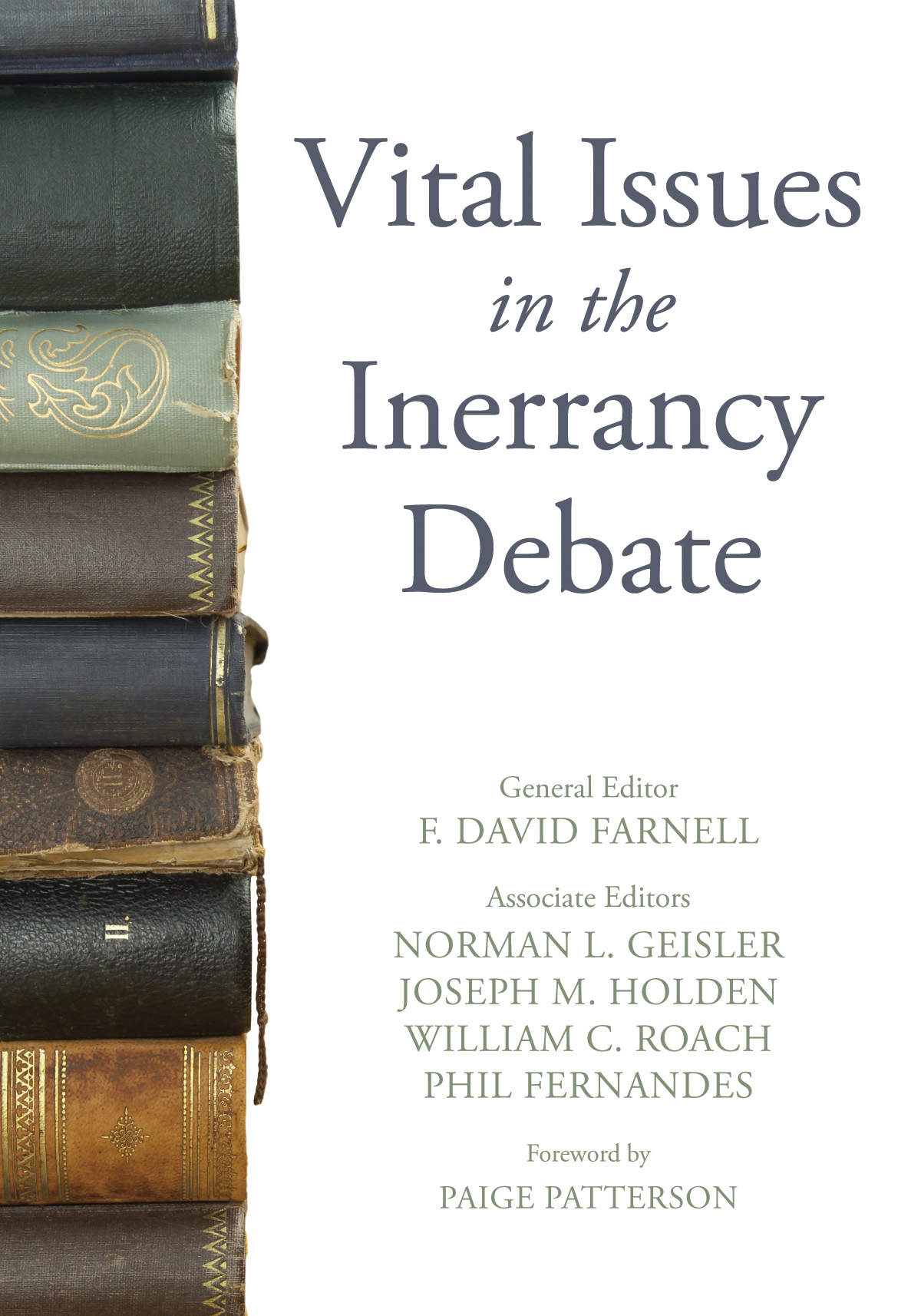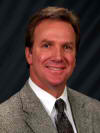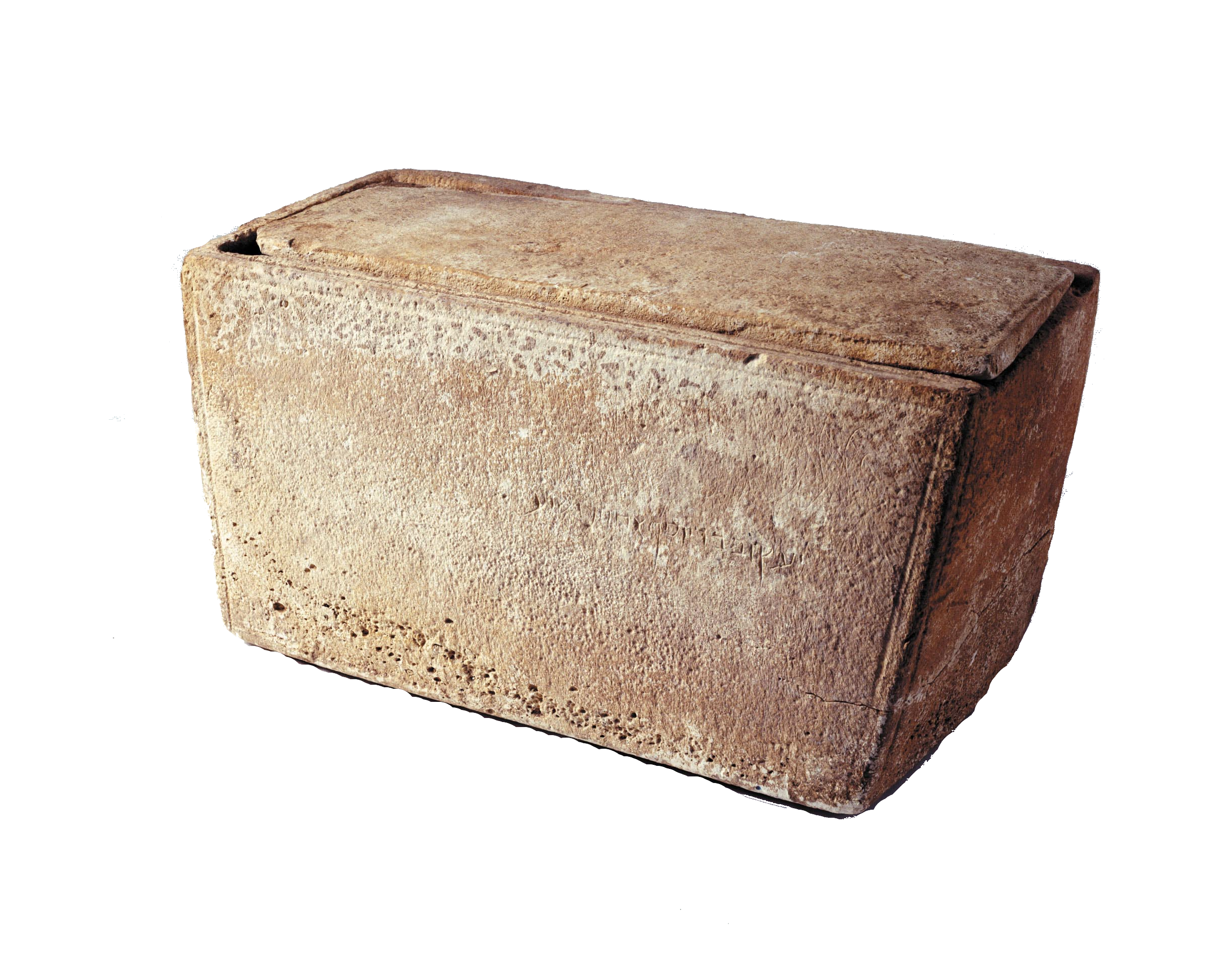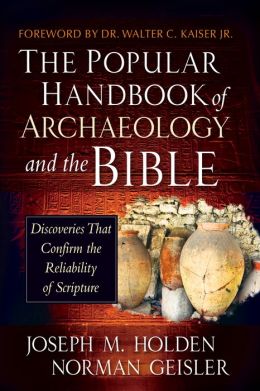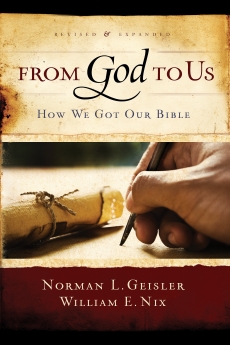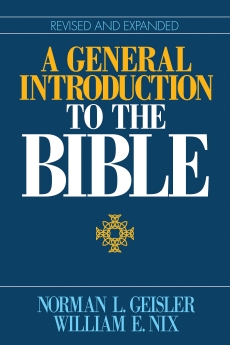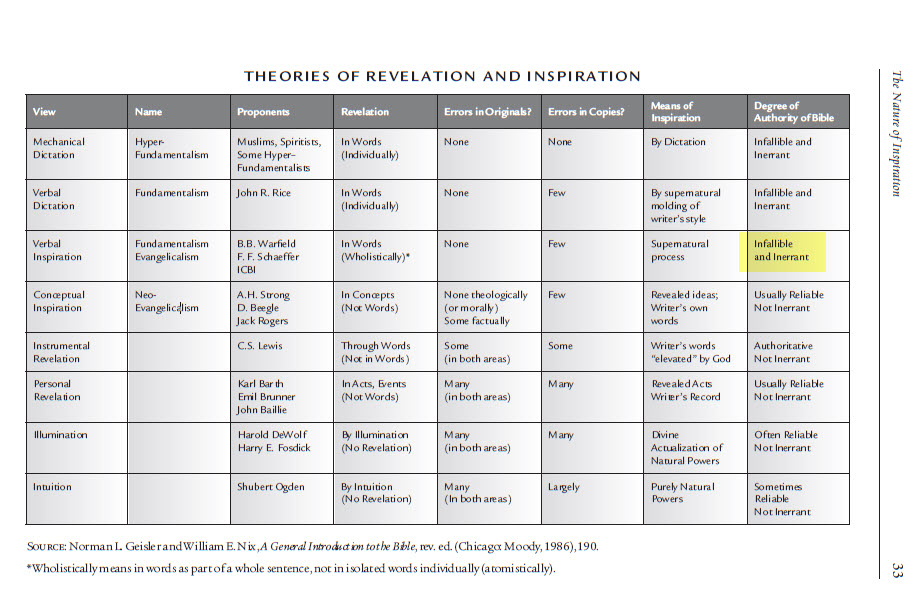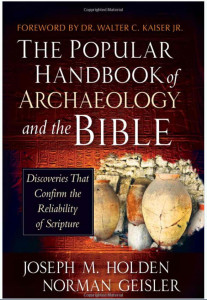Book Review of Vital Issues in the Inerrancy Debate
Christopher T. Haun[1]
[Click here >> Book Review – Vital Issues in the Inerrancy Debate to open this review as a PDF file.]
|
Title:
|
Vital Issues in the Inerrancy Debate |
| Publisher: |
Wipf & Stock |
| Date: |
2016 |
| General Editor: |
F. David Farnell |
| Contributors: |
F. David Farnell, Norman L. Geisler, Joseph P. Holden, William C. Roach, Phil Fernandes, Robert Wilkin, Paige Patterson, Shawn Nelson, Christopher T. Haun |
| PAGES: |
563 |
|
PRICE:
|
$85.00 (Hardcover), $64.00 (Paperback)[2]
Kindle: $15.00 at Amazon.com
|
In Kurosawa’s classic film The Seven Samurai, desperate farmers convince veteran warriors to help defend their village and harvest from raiding bandits. Six ronin and one apprentice accept the challenge. After fortifying the village and giving the farmers a crash course in asymmetric warfare, the seven samurai lead the defense when the marauders return. Some of this story line and imagery came to mind as I read Vital Issues in the Inerrancy Debate (VIID) because first and foremost it is a defense.
Twenty-eight of its thirty-two chapters are written by six veteran scholars (holding PhDs in various fields). Four of its chapters are written by two MDiv candidates. In every chapter the authors are, as the preface says, “earnestly contending for the faith delivered once and for all to God’s people.” Every one of its meaty pages defends the traditional, conservative evangelical views of inspiration, inerrancy, and hermeneutics from the destructive use of biblical criticism. By extension they are defending all the propositions in and doctrines derived from the Bible.
VIID is an anthology of some of the best and most recent articles on topics of inerrancy, hermeneutic, and the quest for the historical Jesus. While it does weave in some of the history of the main clashes in the battle for the Bible in the twentieth century—such as the fundamentalist-modernist controversy, Barth and Neo-Orthodoxy, Fuller, Ladd, Rogers, McKim, the International Council on Biblical Inerrancy (ICBI), ETS and Robert Gundry—it doesn’t linger on them. Mainly it offers fresh and intelligent responses to the newest wave of challenges to the Bible offered by evangelicals in books like The Resurrection of Jesus (IVP, 2010), The Lost World of Scripture (IVP, 2013), Ten Guidelines for Evangelical Scholarship (Baker, 2013), Five Views on Biblical Inerrancy (Zondervan, 2013), Can We Still Believe the Bible? (Brazos, 2014), Lost World of Adam and Eve (IVP, 2015), Peter: False Disciple and Apostate According to Saint Matthew (Eerdmans, 2015), and I (Still) Believe (Zondervan, 2015).
Here is a sampling of the many thought-provoking questions which are discussed: How much emphasis should genre be given when doing interpretation? What is the nature of historical narratives? How do hermeneutics and inerrancy interrelate? Are the ideas of the International Council on Biblical Inerrancy still important and relevant? What do the three living framers of the Chicago statements (Sproul, Packer, and Geisler) say about the new hermeneutic and the redefinitions of inerrancy? How do we deal with difficult passages in the Bible? What did the framers of the ICBI statements really mean? Where should one turn to get clarification about the Chicago Statements? Are the academic institutions of the evangelical world failing to learn the lessons of the past? Was the Apostle Matthew an Apostate? Which view has continuity with the early church fathers, Augustine, Aquinas, the Reformers, the writers of the 12-volume The Fundamentals, and the old Princetonians? Is inerrancy just for Calvinists? How early were the gospels really written? Is inerrancy just a peripheral doctrine? Is inerrancy derived from inductive and/or deductive logic? Was Matthew really the only one to mention the raising of the saints in Matthew 27? What do the Church fathers say about Matthew 27? Did any ancient Romans detect the influence of Roman historiography in Matthew 27? Should inerrancy be used as a litmus test of orthodoxy? Are the tools of biblical criticism really neutral? Does purpose or intention determine meaning? What does “truth” really mean? Is an intentionalist view of truth an alternative to the correspondence view of truth? Why did Bart Ehrman drift from fundamentalism to liberalism? What was the conservative resurgence in the Southern Baptist Convention? Is there a resurgence of neo-evangelicalism? How does postmodernism fit into all this? Should the story of Adam and Eve be taken literally? Should organizations enforce their doctrinal statements amongst their own members? Does every scholarly evangelical organization lose its grip on inerrancy by the third generation? Should apologists defend both the Faith and the Bible? Should evangelicals send their budding scholars to earn PhDs at schools that specialize in biblical criticism?
VIID is provocative. The most controversial thing about the book is probably its willingness to name the names of many influential men. I’m not just talking about the old rascals like Bacon, Barth, Bart D. Ehrman, Bultmann, Darwin, Descartes, Hobbes, Hume, Kant, Lessing, Perrin, Reimarus, Schweitzer, Spinoza, Strauss, Tillich, Troeltsch, and von Harnack. VIID does mention them. But if focuses more on the also names the names of present and recent scholars, publishers, and bloggers: Ben Meyer, Birger Gerhadsson, Bruce Waltke, Carlos Bovell, Charles Talbert, Christopher Ansberry, Christopher Hays, Christian Smith, Clark Pinnock, Craig Blomberg, Craig Evans, Craig Keener, D. Brent Sandy, Daniel P. Fuller, Daniel Harlow, Daniel Wallace, Darrell Bock, David Capes, David E. Garland, Donald Hagner, Donald K. McKim, Douglas Moo, Edwin Yamauchi, E. P. Sanders, Ernst Wendland, Gary R. Habermas, George Eldon Ladd, Gerd Theissen, Grant R. Osborne, Gregory A. Boyd, H. C. Kee, Heath Thomas, I. Howard Marshall, J. Merrick, J. P. Holding, Jack B. Rogers, James Barr, James Bruckner, James Charlesworth, James Crossley, James D. G. Dunn, Jeremy Evans, James Hamilton, Joel N. Lohr, Joel Watts, John Byron, John R. Franke, John Schneider, John H. Walton, Justin Taylor, Ken Schenck, Kenton Sparks, Kevin J. Vanhoozer, Lee McDonald, Leith Anderson, Leon Morris, Martin Soskice, Matthew Montonini, Michael F. Bird, Michael Green, Michael R. Licona, Moises Silva, Murray Harris, N.T. Wright, Nick Peters, Nijya Gupta, Paul Copan, Paul Jewett, Peter E. Enns, Paul Ricouer, Peter H. Davids, Phillip Long, Richard Burridge, Richard Horsley, Robert H. Gundry, Robert W. Yarborough, Robert Webb, Scot McKnight, Stephen M. Garrett, Thomas Schreiner, Tremper Longman III, W. David Beck, Walter Liefield, William Lane Craig, William Warren, and William Webb. (I probably missed a few!) Many of these men are held in high esteem in by many evangelicals. And yet VIID says that each of these men have in some way and to some degree challenged the parameters delineated by the ICBI in The Chicago Statement on Biblical Inerrancy (CSBI, 1978) and The Chicago Statement on Biblical Hermeneutics (CSBH, 1983).
Standing in the watchman tradition of books like The Battle for the Bible (Lindsell, 1976), The Bible in the Balance (Lindsell, 1979), The Jesus Crisis (Thomas and Farnell, 1998), The Jesus Quest (Geisler and Farnell, 2014), and Defending Inerrancy (Geisler and Roach, 2011), an exposé of this scope runs the risk of being accused of fratricide, libel, divisiveness, disunity, faction creating, quarrelsomeness, malice, and nastiness. But really all of its authors do a remarkable job of contending without being contentious. None of the pages were stuck together with drops of venom. With a passionate concern they succeeded in “not be[ing] quarrelsome but . . . correcting his opponents with gentleness” (2 Ti. 2:4) and in “not regard[ing] him as an enemy but warn[ing] him as a brother” (2 Th. 3:15).
There is merit in the maxim “attack the idea, not the man who holds it.” Perhaps the Apostle Paul anticipated this question when he wrote, “We destroy arguments and every lofty opinion raised against the knowledge of God, and take every thought captive to obey Christ” (2 Co. 10:5). Ultimately the good fight of faith is not against people but against opinions and thoughts. But then must the defense always preclude the naming of names? As much as we might all prefer to avoid pointing fingers, it seems unavoidable at times. When specific professors are saying specific things to specific audiences, the defense cannot be sufficiently meaningful (certainly not in any actionable sense) unless specific names are named and their actual words are exposed and evaluated.
Also, in the act of naming names of men spreading ideas they deem corrosive to the orthodox faith, these watchmen are following apostolic precedents. The Apostle John named Cain as the old rascal who should not be imitated (1 Jn. 3:2) and named Diotrephes as the noteworthy contemporary antagonist inside the network of first-century churches. He described Diotrephes as one who does not properly recognize apostolic authority, who spoke “wicked nonsense” against them, and who should not be followed (3 Jn. 9-12). Similarly the Apostle Paul named Jannes and Jambres as the old rascals who will serve as patterns for many in these last days (2 Ti. 3:1-9). He also generalized that “all who are in Asia have turned away from me” and singled out Phygelus and Hermogenes as noteworthy examples (2 Ti. 1:15). Similarly he warned about Demas—a man who had been one of Paul’s coworkers and companions—because he preferred the world (2 Ti. 4:10). Paul also wanted church leaders to be wary of “Alexander the coppersmith” who “did me great harm” and “strongly opposed our message” (2 Ti. 4:14-15). He urged Timothy to “charge certain persons not to teach any different doctrine, nor to devote themselves to myths . . . which promote speculations rather than . . . a good conscience and a sincere faith.” These “certain persons” had “wandered away into vain discussion, desiring to be teachers. . . without understanding either what they are saying or the things about which they make confident assertions” (1 Ti. 13-7). He named three of them by name (“among whom are Hymenaeus and Alexander” and “among them are Hymenaeus and Philetus”). These were men who also were operating inside the first-century network of apostolic churches. They were insiders who had “made shipwreck of their faith” and “swerved from the truth.” They were “upsetting the faith of some” with “irreverent babble” that will “lead people into more and more ungodliness” and “spread like gangrene” (1 Ti. 1:19-20; 2 Ti. 2:16-18). Similarly the authors of VIID are attempting to warn the Bible-believing world that many of the professors at evangelical schools (who generally earned their PhDs from prestigious post-protestant, anti-evangelical schools) are leading evangelicals away from evangelical orthodoxy through the use of unorthodox methodology.
VIID also runs the risk of being accused of trying to stymie the progress of biblical scholarship, of trying to keep us stuck in the past, of interfering with the grand quest to “follow the truth wherever it leads,” and of thus being overall anti-intellectual and anti-scholarly. But VIID is an intellectual and scholarly attempt to discourage the use of corrosive literary criticism while encouraging healthy biblical scholarship. The authors urge considering of lessons of the past which show how the higher critical path leads not to pinnacles of illumination, enlightenment, and progress but to precipices of doubt. The application of feminist criticism, form criticism, genre criticism, historical criticism, Marxist criticism, midrash criticism, mythological criticism, New Criticism, new historical criticism, post-colonial criticism, post-structuralist criticism, psychoanalytic criticism, redaction criticism, rhetorical criticism, sociological criticism, source criticism, and whatever the next flavor of literary criticism that becomes vogue among secular scholars in the next decade all have one thing in common: They are critical and revolutionary by nature. Progress is made by challenging traditions and creating new knowledge with new wisdom. VIID insists that when evangelical scholars use secular literary criticism in their biblical criticism, it will ultimately lead to the same doctrinal graveyard that the neo-orthodox and liberal/modernist scholars filled in former decades with their use of higher criticism. The speculations produced during the exercise of critical methodologies is invariably given precedence over the plain meanings in the text of the Bible, once again the word of God is nullified for the sake of human traditions.
The neo-evangelical revolution is also changing the field of historical-evidential Christian apologetics. More than once VIID touches upon the rising tendency among evangelical biblical scholars to meet the historical critics on their own turf. They often create scholarly defenses for the big things—such as the general historical reliability of the gospels and the historical likelihood of the resurrection of Jesus—while being overly willing to amputate some of the seemingly less defensible and more dispensable propositions in the Bible. This innovative (non-classical) approach seems to be creating a division between those satisfied with defending a historical, creedal, and “mere” Christianity and those who would also defend the Bible in whole and part.
Some of VIID’s chapters are derived from articles originally posted at DefendingInerrancy.com, a website that has had more than 200,000 visits, 55,000 Facebook likes, and 48,000 signatures on its petition in support of The Chicago Statement on Biblical Inerrancy. These statistics suggest that the latest battle for the Bible has not been lost yet. In The Magnificent Seven, a western adaptation of The Seven Samurai, the plot is further complicated by the ongoing question of whether the villagers will allow the bandits to continue to fleece them or whether they will really rise up and join the veterans in the fight. What will the villagers in the evangelical village do about neo-evangelical and neo-orthodox scholarship that is robbing them of their doctrinal heritage? To borrow a phrase from the oaths sworn by those seeking either citizenship or high office in the United States, will we defend our constitution “against all enemies, foreign and domestic?” Will we fight the good fight of faith not just against the siegeworks erected outside the city walls but also against those that have been smuggled inside the walls? Or will we watch the undermined walls collapse mysteriously around us and wonder how our harvest was plundered again? For those fighting the good fight of faith, Vital Issues in the Inerrancy Debate deserves consideration.
Chapter by Chapter
The book begins with a one-page tribute to Dr. Norman Geisler by the other contributors for his decades of defending and commending the faith. Indeed he is “worthy of a double honor” (1 Tim. 5:17). The two-page foreword by Dr. Paige Patterson sets the tone well with a call to continued vigilance. Patterson also provides excellent insights into the history of the inerrancy debate. He was part of the International Council on Biblical Inerrancy (ICBI) and remembers it well. The two-page preface acknowledges the debt to the ICBI and adds another dimension to the history of the debate. The first 115 pages are devoted to defining inerrancy. The remaining pages are devoted to defending it.
The first chapter is titled “The Historic Documents of the International Council on Biblical Inerrancy.” It is 17 pages long and is largely a condensed adaptation of the book Explaining Biblical Inerrancy (Bastion Books, 2012). Geisler begins by pointing out that he is currently one of the last three living framers of the three statements produced by the International Council on Biblical Inerrancy. He writes to “dispel some contemporary misinterpretations of what the ICBI framers meant by inerrancy” and to set the record straight. He enumerates the four fundamental documents of the ICBI (all four of which are collected in Explaining Biblical Inerrancy) and the other important books produced by the ICBI. He explains why the ICBI view of inerrancy is important. He explains the four main areas where scholars on the more liberal end of the evangelical spectrum (and usually holding membership in the Evangelical Theological Society and signing agreement with CSBI) have ignored, misunderstood, or otherwise challenged the CSBI: (1) the meaning of “truth,” (2) the function of genre, (3) the nature of historical narratives, (4) the relationship between hermeneutics and inerrancy. He very ably bolsters these four areas. He also gives a subtle challenge to the Evangelical Theological Society to enforce their doctrinal statement among its members. This chapter also includes all the articles of affirmation and denial from the CSBI and CSBH. This may then be the first time these two statements have ever been put together in their entirely and placed into a printed book. This was an unbeatable choice for a first chapter. This is something everyone in the ETS and EPS should come to grips with. Those who appreciate this chapter will enjoy its expansion in Explaining Biblical Inerrancy.
Chapter two is titled “What Is Inerrancy and Why Should We Care?” It is only four pages long and is written by Geisler and Shawn Nelson. It begins with a brief explanation of the three “in’s”: Inspiration, Infallibility, and Inerrancy. It gives four reasons why inerrancy is important and ultimately an essential—not peripheral—doctrine. Pointing to CSBI as the standard for describing what inerrancy is and is not, it proceeds to explain that the historical view of inerrancy is under attack right now. It gives a focus on the new wave of challenges to CSBI that arguably began in 2010 with various published and spoken statements by apologist Michael Licona.
Chapter three is also by Nelson and is titled “A Voice from a New Generation: What’s at Stake?” Nelson makes it clear the attack upon inerrancy by Michael Licona in 2010 exposed a much bigger problem. Several highly esteemed scholars from the ETS (Craig Blomberg, William Lane Craig, Gary Habermas, Daniel Wallace, J.P. Moreland, W. David Beck, Jeremy Evans, Craig Keener, Douglas Moo, Heath Thomas, William Warren, and Edwin Yamauchi) publically voiced their support for Licona’s right to trump both CSBI and CSBH with form criticism and historical criticism. And this despite very clear statements in both ICBI statements on inerrancy (CSBI and CSBH) that guard against the exact type of maneuver Licona was using. Nelson gives a helpful tour of the historical views of biblical inspiration, infallibility, and inerrancy. He cites Clement of Rome, Polycarp, Pseudo-Barnabas, Papias, Ignatius of Antioch, the Shepherd of Hermas, the Didache, and the Epistle to Diognetus, Justin Martyr, Tatian, Tertullian, Hippolytus, Origen, Cyprian, Eusebius, Athanasius, Cyril, Jerome, and Augustine. He also gives a helpful and concise tour of how the thought of Bacon, Hobbes, Spinoza, Hume, Kant, and Darwin led to a growing popularity of biblical errancy. He distinguishes between Evangelical, Liberal, and Neo-Evangelical views. He projects that the erosion of inerrancy will lead to further doubt and uses the regress of Bart Erhman as an example we should learn from. He makes additional arguments for the importance of an uncompromising view of inerrancy and ends with recommendations for staunching the decay.
Chapter four is written by F. David Farnell and titled, “Evangelical Mentoring: The Danger from Within.” With a shepherd’s heart and a scholar’s eye, Farnell starts by contrasting faithful mentoring with radical mentoring. A considerable amount of Jesus’ earthly ministry was in opposition with those who had interpretations of the Bible that made null the Word of God null. These men were disciples in a tradition and they were making disciples in that tradition. Jesus chose disciples like Peter and Paul to carry on his traditions and make disciples. Paul was a mentor to reliable men like Timothy and Titus. These men were to be mentors to other faithful men who could teach others. Farnell reminds us that some traditions attempt to stay faithful to the apostolic tradition and to the scriptures while other traditions do not represent them faithfully. In a way, it all comes down to mentoring. Against this backdrop he explains his concerns over some of the eighteen professors showcased in the 2015 book titled I Still Believe. He focuses upon the testimonies of Donald Hagner, Bruce Waltke, James Dunn, and Scot McKnight. He’s left questioning whether many of the professors—the teachers of the future teachers—in many evangelical institutions are passing on doubts rather than faith to the students who have been entrusted to them.
Chapter five is a review by Geisler of the 2013 book Five Views on Biblical Inerrancy (FVBI). He begins by pointing out three serious problems with the approach of this book. Having five views in dialogue for inerrancy suggests that inerrancy is “up for grabs” when it really is not. There are not five views. There are ultimately two views. Either the Bible contains errors and contradictions or it does not. Also, of the five authors, only one is an actual inerrantist; the other four are varying degrees of errantists. The deck seems stacked. And since the book was to discuss the CSBI, why were none of the three living framers of the CSBI (Sproul, Packer, or Geisler) asked to participate in a dialogue? His review is 39 meaty pages in length. It’s daunting to try to summarize it. He points out that the Evangelical Theological Society officially adopted the CSBI as its definition of inerrancy. He provides five reasons for the importance and fundamental position of inerrancy. He notes that some of the authors of FVBI misunderstand “truth” and some of them wrongly assume purpose determines meaning. Propositional revelation, accommodation, lack of precision, the role of extra-biblica data, the role of hermeneutics, and the role of extra-biblical genre, pluralism, conventionalism, and foundationalism are all discussed. Geisler nails the coffin lid shut on the question of whether Licona’s views can be harmonized with CSBI and CSBH by pointing out that all three of the remaining framers of the Chicago statements (Sproul, Packer, and Geisler) have confirmed that they cannot. The story of ETS and Robert Gundry is retold. Examples of dealing with bible difficulties (what some of the authors of FBVI would call contradictions) in the OT and NT are given. Geisler also answers the errantists charges against inerrantists of being unbiblical, unhistorical, using the slippery slope argument, being parochial, unethical, divisive, and unloving. Reading this chapter reminded me that Geisler deserves the tribute that the book begins with.
Chapter six is by Dr. William Roach and is titled “The 2015 Shepherds’ Conference on Inerrancy.” John MacArthur and The Master’s Seminary hosted a conference on inerrancy in March 2015. They reaffirmed the importance of holding to total inerrancy and to defining it as the CSBI did. This seven page article reports positively on that conference.
Chapter seven is a fascinating interview William Roach conducted with Paige Patterson. They discuss the conservative resurgence in the Southern Baptist Convention and how their seminaries were rescued from errantism. It discusses what interplay there was between it and the ICBI.
In chapter eight Geisler answers the question of whether one has to be a Calvinist to believe in inerrancy. Many of the leaders of the later ICBI inerrancy movement were
strong Calvinists but most of the signers of the ICBI statements on inerrancy identified as moderate Calvinists, Cal-minians, Arminians, Wesleyans, “or some other label.” Geisler establishes continuity with Augustine, Aquinas, Luther, Calvin, Warfield, Hodge, Wesley, and other Wesleyans. He shows how they upheld inerrancy. He concludes, “Inerrancy is neither a late nor a denominational doctrine. It is not provincial but universal. It is the foundation for every group that names the name of Christ. . .”
Chapter nine is where Geisler reexamines the relationship between inerrancy and hermeneutics. He is tackling the claim that is made by those who defend the attacks against CSBI and CSBH by saying, “Leave him alone. It’s just a matter of interpretation, not of inerrancy.” This could be the most important chapter of the book as it tackles what may be the thing that evangelicals have had the hardest time understanding. Today many evangelicals can try to claim to be inerrantists and to agree with CSBI while promoting hermeneutical gymnastics to trump inerrancy. Yet it was clear to the wise leaders of the ICBI that after producing the CSBI still had to proceed to create the CSBH. What good is it to reinforce the front door while leaving the backdoor unlocked? Geisler discusses how this played out with the controversies surrounding Jack Rodgers, Robert Gundry, Paul Jewett, and Michael Licona. He challenges various assumptions: inspiration and interpretation are separate matters, allegorical interpretation, truth is not correspondence to facts, biblical narratives are not necessarily historical, hermeneutic is neutral, and more.
In chapter ten Geisler responds to William Lane Craig’s advocacy of limited inerrancy based on inductive logic and his argument against unlimited inerrancy as based on deductive logic. Naturally Geisler begins with the question of whether inerrancy has an inductive or deductive basis. Explaining the “false disjunction,” the chapter quickly becomes a delight for those of us who appreciate logic. He then proceeds to tackle Craig’s claims that only the author’s intentions (and not all affirmations) are inerrant, that only essential matters are inerrant but not peripheral matters, and that extra-biblical genre determines the meaning of biblical texts. He discusses the question of genre and explains how inerrancy is an essential doctrine. He discusses Licona’s errors. He contrasts the evangelical and neo-evangelical views of inerrancy and reminds that the ETS adopted CSBI in 2006 as its definition of inerrancy. Geisler also makes the important correction that Kenneth Kantzer, the professor Craig claims to have learned the doctrine of inerrancy from, was actually a committed follower of the Warfield-Hodge view of total inerrancy. Kantzer would have been “clearly opposed to the Craig-Licona view of limited inerrancy.” He also reminds Craig that Packer, Sproul, and Geisler have all confirmed that Licona’s view of Mt 27 (which Craig also essentially holds) is not compatible at all with CSBI or CSBH. He concludes saying, “Thus evangelicalism is the rightful owner of unlimited inerrancy, and those professed evangelicals who modify it or limit it to redemptive matters are, at best, the rightful owners of the term Neo-Evangelical.”
Chapter eleven is by Farnell and is titled “Early Twentieth Century Challenges to Inerrancy.” Encouraging us to learn from history in order to not repeat its mistakes, Farnell compares what was happening in the early twentieth century (with the fundamentalist-modernist controversy) and what is happening here in the early twenty-first century (with the evangelical-neoevangelical controversy). The parallels seem uncanny. He explains how and why the The Fundamentals was produced and “left as a testimony by the faithful to the early twentieth-century church’s experience of the attack on orthodox Protestant beliefs, conducted aggressively by higher criticism, liberal theology, Catholicism. . . , socialism, Modernism, atheism, Christian Science, Mormonism, Millennial Dawn, Spiritualism, and evolutionism that had infiltrated its ranks and subsequently caused great damage within the church with regard to its vitality and theology. Above all, they left it as a warning to future generations in hopes of preventing a similar occurrence among God’s people in the future.” Farnell points out that after the divinity schools fell to modernism new schools like Westminster Theological Seminary, Dallas Theological Seminary, and Fuller Seminary were planted to serve as bastions of conservative, biblical doctrine, inerrancy, and the fundamentals of the faith.
In chapter twelve, Farnell picks up where he left off in chapter 11. He discusses the challenges (or crisis) in the twenty-first century caused largely by fundamentalist or evangelical scholars seeking the respect of mainline academia. Many of the young scholars were sent to Ivy League, British, or Continental European schools to earn their PhDs. Many schools began to hire professors who were from these schools that were dominated by theological liberalism. With them came the neo-orthodoxy of Karl Barth. He explains how Fuller Seminary drifted away from evangelical views about the Bible and became rather neo-evangelical. He discusses Ladd, Lindsell, Rogers, McKim, Woodbridge, Gundry, Barr, ICBI, ETS, Blomberg, Silva, Geisler, The Jesus Crisis, Bock, Webb, Osborne, The Jesus Quest, the third quest for the historical Jesus, Perrin, Ladd, Roach, Defending Inerrancy, Sparks, McCall, Thompson, Yarbrough, Linnemann, Gundry, more Blomberg, Dan Wallace, Bill Craig, Hagner, Ehrman, and more. This provides an excellent history which filled in many gaps for me. It shows that critical scholarship is still going today where it went in the past.
Chapter thirteen is titled “The Resurgence of Neo-Evangelicalism: Craig Blomberg’s Latest Book and the Future of Evangelical Theology.” Here William Roach provides a concise but helpful historical backdrop of the controversies over inerrancy. He is primarily critiquing Craig Blomberg’s book Can We Still Believe the Bible? But he also weaves in some other recent works by neo-evangelicals who advocate errantism. He corrects some inaccuracies and confirms that Blomberg is yet another scholar who is “now willing to move beyond the vision and legacy of classic evangelicalism and the ICBI.” In his critique of Blomberg’s ideas he also weaves in many other related bits with mastery of the subject matter.
In chapter fourteen Phil Fernandez describes how the battle for the Bible has begun again. He begins by saying, “This chapter is not meant to divide brothers in Christ. Rather, it is a call to honesty. Those who call themselves evangelicals must truly be evangelicals. . . . If we sign a doctrinal statement, we must actually believe what we affirmed in that statement. We should not have the liberty to redefine the doctrines addressed in that statement. . . . this chapter should not be understood as an attack on Christian brothers. Rather, it is an indictment on the present state of evangelical scholarship itself.” He explains how the battle for the Bible raged in the 1970s and how it led to the ICBI. He discusses the reason for Robert Gundry being asked to leave the ETS and how the ETS did not vote Clark Pinnock out. He also sees a revival of the battle for the Bible starting with Mike Licona in 2010. He discusses the problems of genre and historiography in a way that harmonizes well with the other chapters but which also remains distinct. One thing that stood out to me was the way Phil tied in the minimal facts case for the resurrection. He says, it “is a great way to defend the resurrection. But, we must never allow the minimal facts case to evolve into a minimal facts evangelicalism or a minimal facts New Testament scholarship.” He challenges the ETS to enforce and even enlarge their doctrinal statement.
Chapter fifteen considers the question of whether or not biblical inerrancy as a “litmus test” of evangelical orthodoxy. This was written by Christopher Haun in response to a blog post written by Daniel Wallace. Wallace had pointed out that Carl F. H. Henry remained averse to setting biblical inerrancy as the litmus test of orthodoxy. Haun attempts to show how Wallace is partially right and partially wrong. He clarifies Henry’s position using several quotes by Henry himself and some by Ronald Nash.
Farnell is asking “Can We Still Believe Critical Evangelical Scholars?” in chapter sixteen. He reminds us of how vibrant Christianity had been in the 18th and 19th centuries and then asks how so many churches and cathedrals are boarded up now. How did British and Scottish universities become spiritually dead? And why do American evangelicals still go there to get their PhDs? He explains that the change was internal. He explains a few forces of change and talks about why things were different in the United States. One of the differences is that two wealthy laymen paid for a project that would produce the twelve volume set of The Fundamentals between 1910 and 1917. Three million of those volumes were distributed. As schools like Princeton succumbed to the forces of apostasy, schools like Westminster Theological Seminary, Dallas Theological Seminary, and Fuller Theological Seminary were started. He compares the similarities between the 20th and 21st century scenes and encourages us to learn the lessons of the past. He discusses some of the harmful ideas of Ladd, Blomberg, Hagner, and more.
In chapter seventeen Farnell discusses “The ‘Magic’ of Historical Criticism.” This is a 59 page essay.
In chapters 18 and 19, Farnell gives a “Critical Evaluation of Robert H. Gundry’s Westmont College Lecture, ‘Peter: False Disciple and Apostate according to Saint Matthew’”
In chapter 20 Geisler and Farnell provide “A Critical Review of Donald Hagner’s ‘Ten Guidelines for Evangelical Scholarship’”
Chapter 21. Geisler sets the record straight on “On Licona Muddying the Waters of the Chicago Statements of Biblical Inerrancy and Hermeneutics.”
Chapter 22. Geisler sets the record straight on “The Early Church Fathers and the Resurrection of the Saints in Matthew 27:51–54.”
Chapter 23. Geisler reviews Craig Blomberg’s book Can We Still Believe in the Bible? He shows how Blomberg’s views contradict, misunderstand, and attack the ICBI view on inerrancy. He responds to Blomberg’s Defense of Robert Gundry, Murray Harris, Mike Licona
Chapter 24 | ICBI Inerrancy Is Not for the Birds | Joseph Holden responds to the “current trend among evangelical New Testament scholars to utilize or approve of genre criticism (e.g., Craig Blomberg, Michael Licona, Darrell Bock, Michael Bird, Carlos Bovell, Kevin Vanhoozer, et al.) to dehistoricize the biblical text appears to stem from an aversion to the correspondence view of truth.”
Chapter 25. Contemporary Evangelical NT Genre Criticism Opening Pandora’s Box? Joseph M. Holden
Chapter 26 | Book Review: Craig Blomberg’s Can We Still Believe the Bible? |Joseph M. Holden
Chapter 27 | Book Review: The Lost World of Adam and Eve | Norman L. Geisler
Chapter 28 | An Exposition and Refutation of the Key Presuppositions of Contemporary Jesus Research | Phil Fernandes
Chapter 29 | Redating the Gospels | Phil Fernandes
Chapter 30 | Misinterpreting J. I. Packer on Inerrancy and Hermeneutics | William C. Roach and Norman L. Geisler
Chapter 31 | Can We Still Trust New Testament Professors? | Bob Wilkin
Chapter 32 | Christopher T. Haun explores the question of whether ancient Romans detected the influence of Roman historiography in Matthew 27:45–54 or not. He puts the theory that Roman historians influenced Matthew’s way of reporting history to the test by examining thirty case studies where ancient Romans referred to one or more of the events in Matthew 27:45–54. Did any of the ancients interpret these events less than literally? He also revisits the three case studies that Licona cited in The Resurrection of Jesus.
Epilogue | Historical Criticism vs. Grammatico-Historical: Quo Vadis Evangelicals? | F. David Farnell
Appendix: Statements on the Importance of Inerrancy from Prominent Christian Leaders
[1] Christopher T. Haun is a Master’s Degree candidate at Veritas Evangelical Seminary and an editorial associate at Bastion Books. This book review was written for the April 2016 issue of the Journal of the International Society of Christian Apologetics.
[2] To purchase at a 40% discount, use “inerrant” as a coupon code upon checkout at http://wipfandstock.com/vital-issues-in-the-inerrancy-debate.html. Also available at http://www.amazon.com/Vital-Issues-Inerrancy-Debate-Farnell/dp/149823724X


